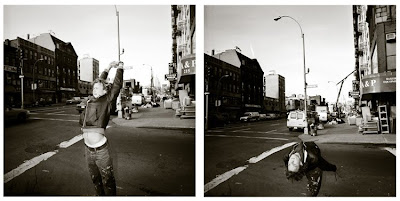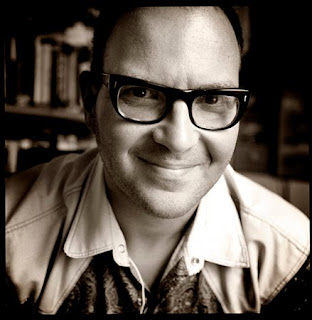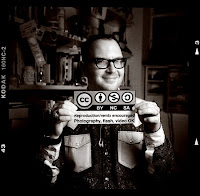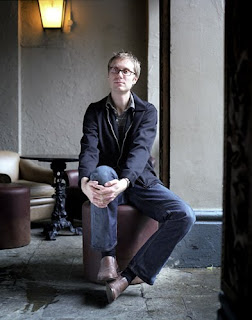 Part II ‘Van Gogh, may have had previous relationship baggage - see the whole ear in a letter thing’The following is from a conversation between me and Bree Seeley.
Part II ‘Van Gogh, may have had previous relationship baggage - see the whole ear in a letter thing’The following is from a conversation between me and Bree Seeley.
Bree has been both an Editorial Director for, and agent with Magnum, as well as working with (amongst others) such names as Anton Corjbin, Jack Peirson and Pierre Et Gilles.JW - Bree, one of the decisions that I came to make early one was to rep myself and to abuse friendships with people like you in order to learn how to do it ....BS - ....repping oneself is a really sober decision. I swear, the information one gleans independently takes root in a significantly more meaningful way than being party to somebody eles's high talk.
The latter can be a sort of rush to be involved. For example; agent says they’re calling their old mates to do lunch/ cocktails to discuss the latest matters of glitzy third parties business which they’re hoping to land and, voila: you’re stoned on thinking that you're nearer the industry fire than you really all.
And frankly, the only item one can bet on, is that the wait staff will be up a tip after that meeting.
Actually being avid about tracking players involved in projects (magazines, web/multi media projects, books, exhibitions..) takes diligence at first, but soon becomes a natural reflex and addictive.
Learning the names and responsibilities of industry folks is like unravelling a sweater and soon you've got the whole thing uncovered. Give these practices a while and you find crossover names reoccurring. Soon you get it and mercy... you've garnered a lot of information and it doesn't feel like work anymore because you're no longer in the dark.
You'll have information that, combined with the wherewithal, will allow you to pursue the people you admire and/or projects you relish, and you’ll make an impression on its players, given that you've actually tracked individuals and 'know' their work. There's integrity in this method and a much respected depth of understanding.
Simply grafting yourself onto others and hoping that they'll following up with what seem like ‘the untouchables’ does not offer you a feel for how the projects or industry trades.

Relationships you as the artist make with the decision makers (Creative Directors, Art Directors, Picture Editors, Gallerists) can never be topped by facilitators or middle-people. The decision makers on creative or cultural projects are considered 'the artists' at their pop culture offices, where in fact they are 'remixers' (myself included - sigh). This crowd in-turn require you (the actual artist) to do the real work and for that they will always want as much contact with you as possible.
Agents know this and hence once you find yourself having secured a project, artists often awkwardly start wrestling with their agent who insists in remaining involved. For me this is where an agent earns their stripes. If they can stay out of the mix (more-or-less) and let the remixer and artist do their work, then they're okay by me.
Agents will come and go but once you've made a solid relationship with a facilitator at the actual creative project you hope to work with (ad agency, magazine, publisher etc..) they will be calling you directly. That's just how it goes.
JW - Okay so I did all that but I’m still wanting to work with someone, what should I look out for?BS - Well, some agents might require you to pay them a
base salary instead of a commission basis. A quality agent will see you as two parts of a whole. The Ying and the Yang of getting this ‘making-a-creative-living-thing’ done. They “the business” and you the creative”, but the whole thing spins on where you get together.
Boundaries about work from clients predating an agent relationship need to be established very early, so that nobody assumes the road ahead. Here you need to work to an understanding that is fair (eg. i the client offers low-maintenance work with little or no production requirement - it remains yours for the next 24 months total, thereafter it’s subject to the agent usual percentage. OR, if their work is production heavy then the percentage may be lower for one year (but the agent gets all of the production mark-ups).
You're a creative. Think of a way to manage these clients with your new agent, that offers an incentive to be taken on by the agent and grow that business, but that rewards your previous ingenuity for sealing repeat business. You'll know in your guts when you've settled on a fair deal.
Likewise try to get your head around a reasonable clause should the relationship with the agent fail (
your “pre-nup”). It should be one that allows you to both leave with what you entered the relationship with, as well as a fair sharing of the produce thereof.

Some
shabby agents can also expect artists to foot the entire bill for promotion. Again you’re partners in this. so they need to be chipping in. Hey, I’ve heard of some agents with
bloated rosters who expect to make a profit from promotions because they overcharge their artists. Run from these people.
Turnaround for payment must be in keeping with the turnaround of payment by clients. Any other way and trust will soon break down.
Best to know the outlets you want to work with and expect that the shared knowledge of an agent will have a sword sharpening effect. They may be front line, but all involved work shown to any outlet needs to be absolutely relevant. This goes back to my point earlier about trading on the details of a project, and getting it into your practice early. Bloody hell... between you and an agent there is no reason why this cannot be in check at all times
Don't take an agent on if you’re unable to handle criticism or get snakey with rejection. ‘Natch’, few of us have a love affair with being criticised but if you become badly behaved when you're being dealt it straight, then best find your own way.
I recommend not signing up with agencies with
too many photographers. Again you'll know when the list looks too long for you. It’s okay to be aligned with an agent who has an artist similar to you, but you owe it to yourself to see and understand the real difference between you both. Otherwise you should not be surprised when you lose work to this person - whereas what you want, is to have a chance at some more work because a genre is established at the agency.
If you do commit to an agent,
give it time. Expect nothing for 6-8 months. You gotta break a few eggs to make an omelette. Quality relationships take some time. If the agent is taking steps with you everyday or every week then let the efforts ferment (in a whisky way, not a milk-in-the-sun way). If after 9 months you have little or no feedback and no nibbles, then give it another 3 months of working harder together. Find a second wind, make another plan again: together.
18 months of nothing is fair game for parting ways.
That's 18 looooong months if you didn’t think wisely about the partnership in the first place.
JW : But what about from the other side of the fence? What does a good agent look for or look to avoid?A
highly motivated photographer with a clear sense of purpose for their work. Hopefully it’s not only to become famous but also to do work of lasting merit...
Somebody who may not be a prolific producer (eg. 6000 frames a week) but who
shoots through experimentation and makes efforts to develop as an artist (rather than an artist who talks about changing).
An artist with some genuine experience (doesn't have to be long history) in/of the industry. And so has some grasping of its realities.
A decent person. A professional outlook. Reasonable. Honest. Committed. Mature. No brutal track-record lurking in their previous business relationships.Clarity of vision.
May be working with a popular method but can be said to have a distinctive voice (without this, how can an agent be highly charged about their artist's value).
JW : Okaaaaay, so how come I’ve never met an agent to work with?BS : Worth, you have bad hair, you’re a bit fat and frankly your social awkwardness is very off-putting. I don’t actually know how I know you.
JW : I’m like, probably not going to kiss you goodbye. Unless I should. I think I may have a coleslaw coming anyway.
Bree Seeley has been a facilitator of photography for 12 years . Currently picture editor at The Walrus, in Toronto. She has served as picture editor in the UK at the Sunday Telegraph Magazine and in Canada at Saturday Night, Maclean’s, and Shift. Bree was editorial director at New York photo agency Morisot Inc. and at legendary agency Magnum Photos UK bureau. Bree has taught photojournalism at Wilfred Laurier University, and is currently an instructor at Ryerson University teaching Visual Studies. She has been involved in the development of 10 photographic books, including the 2005 Infinity Award-winning Lodz Ghetto Album: Photographs by Henryk Ross and has been the commissioning photo editor on 20 works that received Gold awards from the Advertising and Design Club of Canada, and on 12 that won Gold at the National Magazine. Married to Franc Madden, she is also mother to a pair of scrumptious children.







































